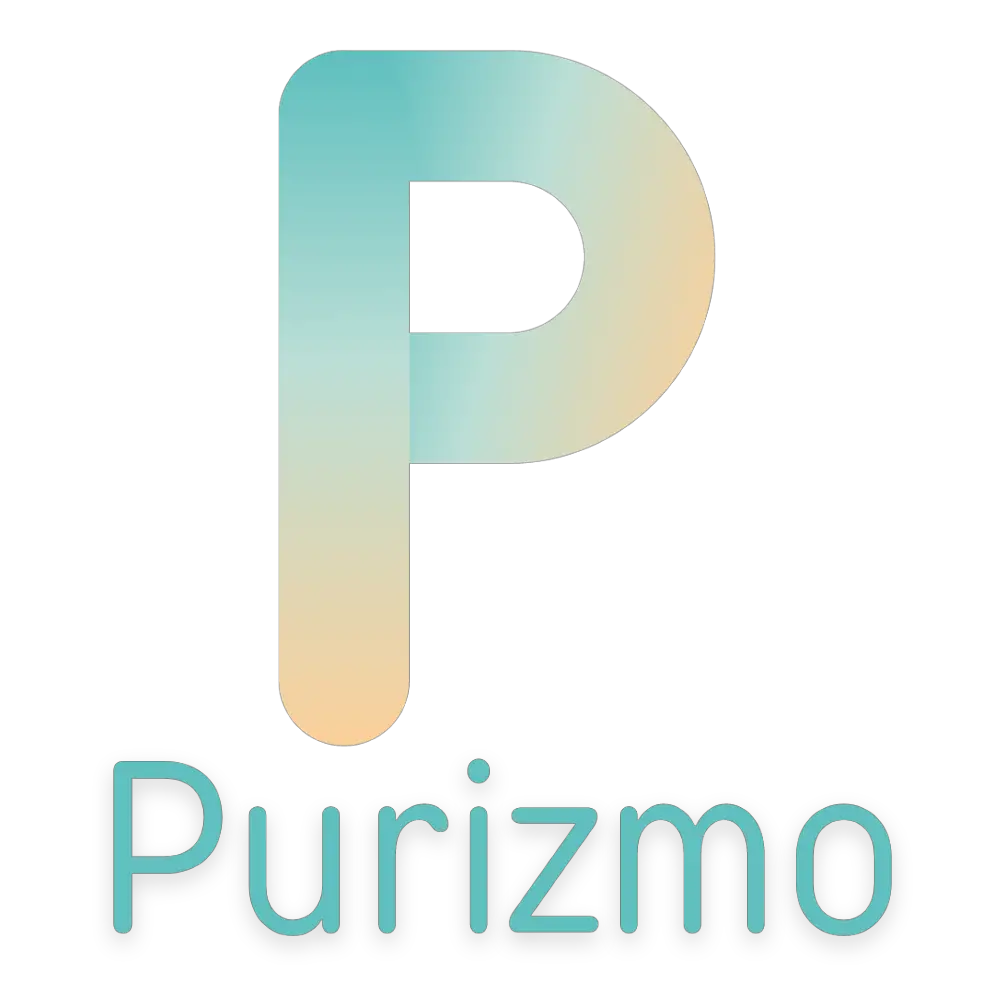As we navigate the world of personal style and home decor, many of us are familiar with the concept of minimalism—the art of living with less.
But what about its antithesis? Broadly speaking, the opposite of a minimalist prefers an abundance of choices and expressions, relishing in variety, complexity, and vibrancy. This approach, often referred to as maximalism, celebrates the ‘more is more’ philosophy, showcasing a bold mix of patterns, textures, and a wide spectrum of colors.
Maximalism isn’t just a design principle; it extends to a broader lifestyle choice. Where minimalists find peace in the void, simplicity, and order, maximalists find joy in the overflows, the eclectic, and the intricate.
It’s about embracing the full spectrum of living, from a richly decorated living space to a lifestyle that doesn’t shy away from the occasional indulgence or the impulsive acquisition of the delightful and the decorative.
Key Takeaways
- The opposite of minimalism is an approach that embraces abundance and choices.
- Maximalism is evident in vibrant, eclectic design and an indulgent lifestyle.
- This lifestyle contrasts the simplicity of minimalism with complexity and richness.
Defining Maximalism – The Opposite of a Minimalist
We live in a world that often praises the ‘less is more’ philosophy, but what about its vibrant counterpart that confidently declares more is magnificent? Let’s dive into the realm of maximalism, where every surface is a canvas and restraint is merely a foreign concept.
Historical Context
Maximalism, a stark contrast to minimalism, is deeply rooted in history. This style emerged as a reaction during periods of social and economic change, characterized by a desire for extravagance and grandeur. Examples can be seen in the opulent Victorian era or during the expressive Art Nouveau movement, where the philosophy was to make a space come alive with personality and abundance.
Maximalist Principles
At its core, maximalism embodies a fearless approach to design and living. It is the opposite of minimalism, favoring the:
- Extravagant: Spaces that command attention with their audacity.
- Elaborate: Design choices that weave together layers of patterns and textures.
- Loud: A visual symphony where bold colors clash and harmonize.
- Exaggerated & Extreme: A celebration of the elaborate that pushes boundaries.
- Rich & Embellished: Every inch tells a story through its meticulous detail.
- Lavish: An indulgence in the All; nothing is too much, and more is welcomed.
Maximalism isn’t just a style, it’s a reflection of a joyful rebellion against the bare and the barren—it’s an art form that lets us live out loud.
Maximalist Design and Art
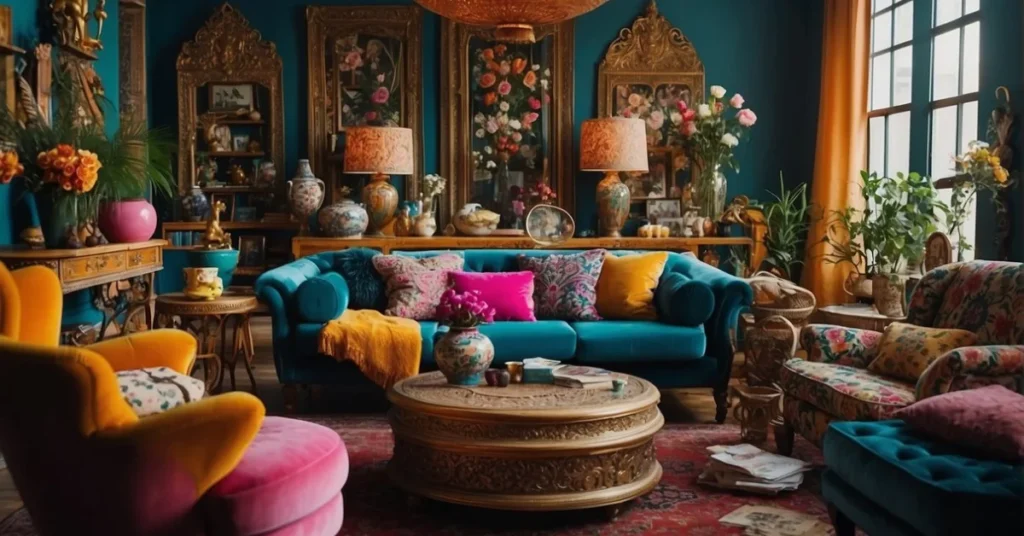
We see “Maximalist Design” as the audacious counterpoint to minimalism, brimming with eclectic styles, vibrant colors, and intricate patterns. It embraces an array of textures, bold colors, and meticulous details, forming spaces that are not just rooms, but narratives.
Characteristics of Maximalist Design
Bold Colors and Textures: The opposite of a minimalist design relishes in the use of bold, contrasting colors and a multitude of textures. It’s not uncommon to find a rich velvet sofa clashing with a geometric rug, crafting a sensory dialogue within the space.
Detailed Patterns: A hallmark of maximalist spaces is the layering of patterns. From stripes and florals to Art Decoinspirations, the amalgamation creates a visually stimulating environment.
Rich Details and Eclectic Styles: Every corner in a maximalist room tells a story, laden with details that range from vintage Arts and Crafts pieces to contemporary Art Nouveau-inspired artwork. The blend of different eras and movements makes for a personally curated aesthetic.
Influence in Modern Art
Maximalist art is a lively arena of expression that has significantly infiltrated modern art paradigms. Artists increasingly employ a opposite of a minimalist approach through layering, complex compositions, and the fearless interplay of motifs and textures. This approach reflects our diverse world, allowing audiences to explore multifaceted narratives within a single piece of art. The influence of maximalist design in art challenges perceivers, asking them not just to view but to experience and decipher.
Lifestyle and Choices
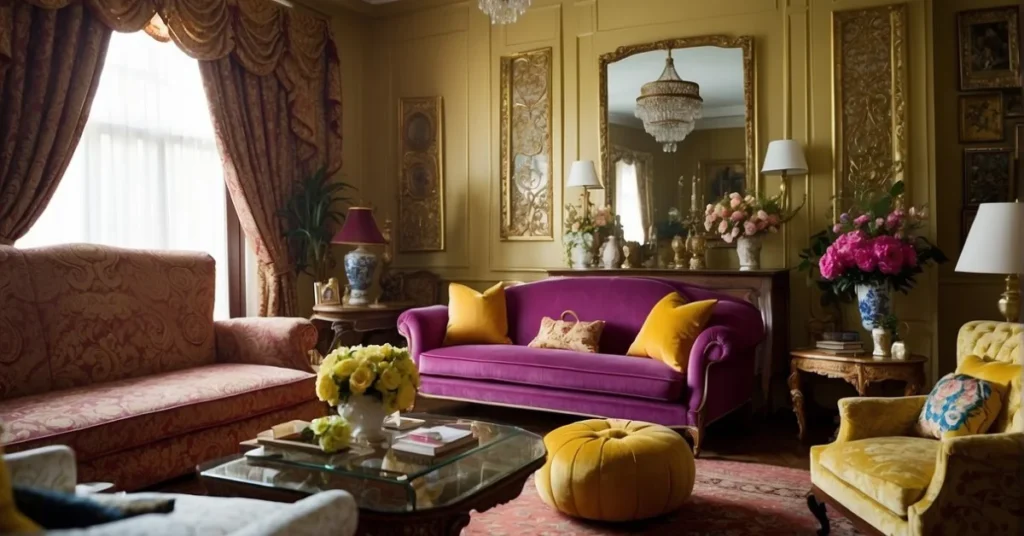
In the vast spectrum of personal expression, we find that our lifestyle and choices vividly communicate who we are. Embracing a opposite of a minimalist approach can infuse everyday living with a vibrant zeal for abundance and multiplicity.
Living a Maximalist Life
Within a maximalist lifestyle, we seek to envelop ourselves in the fullness of all life offers. Our living spaces often reflect this ethos, shunning the sparse for the splendid. Homes are orchestrated with collections, memorabilia, and a rich palette of colors and textures. Contrary to minimalism, which centers around the concept of ‘less is more,’ we believe in the joyous exclamation that more can indeed be more. Choices made from a maximalist perspective can result in an inviting clutter—a curated chaos that’s artful and deliberate. It’s a deep engagement with our surroundings that’s unapologetically expressive.
Maximalism in Fashion
When it comes to fashion, our maximalist leanings are clear. Clothing isn’t just about utility; it’s a canvas for creativity. Bold prints, bright colors, and an eclectic mix of textiles dominate wardrobes. Each outfit is a statement, a defiance of the ordinary, and a choice to stand out. Clothing is not just worn but experienced and becomes a medium through which we radiate our personality and sense of self. Fashion choices become an extension of our lifestyle—a perpetual celebration of individualism and an unyielding quest for aesthetic joy.
Comparison with Minimalism

When we explore interior and lifestyle concepts, it’s imperative to compare the stark differences between the minimalist mantra of “less is more” and its counterpart, which relishes in abundance. As we delve into these distinct philosophies, we seek to understand not just the aesthetic divergences but also the contrasting worldviews they represent.
Maximalism vs. Minimalism in Design
In the realm of design, minimalism embraces simplicity, clean lines, and a monochromatic palette. Every item in a minimalist space serves a functional purpose, creating an environment that is uncluttered and focused on the essential. Maximalism, on the contrary, celebrates luxury, grandeur, and a rich use of color and texture. It’s not uncommon for maximalist decor to include an eclectic mix of patterns and an emphasis on personal expression, making the living space feel full and vibrant. The contrast couldn’t be more evident: where minimalist design maintains a sense of balance and order, maximalism boldly claims every inch of an apartment to tell a story.
Philosophical Differences
Philosophically, the divergence between minimalism and maximalism touches on deeper values. Minimalism often aligns with a lifestyle that finds beauty in the basics, emphasizing the practical and essential, in pursuit of a clutter-free and intentional living space. People who gravitate towards minimalism may seek to balance their lives by owning fewer possessions, thus claiming that simplicity is the ultimate sophistication.
Maximalists, as outlined in their design principles, veer towards excess, where the philosophy is that “more is more,” often reflecting a zest for life that finds joy in abundance and sensory richness. This approach to living doesn’t just differ in practice, but it also marks a stark contrast in mindset where the emphasis lies on celebrating the fullness of life’s offerings over the appreciation for the understated and plain.
Semantic Connections
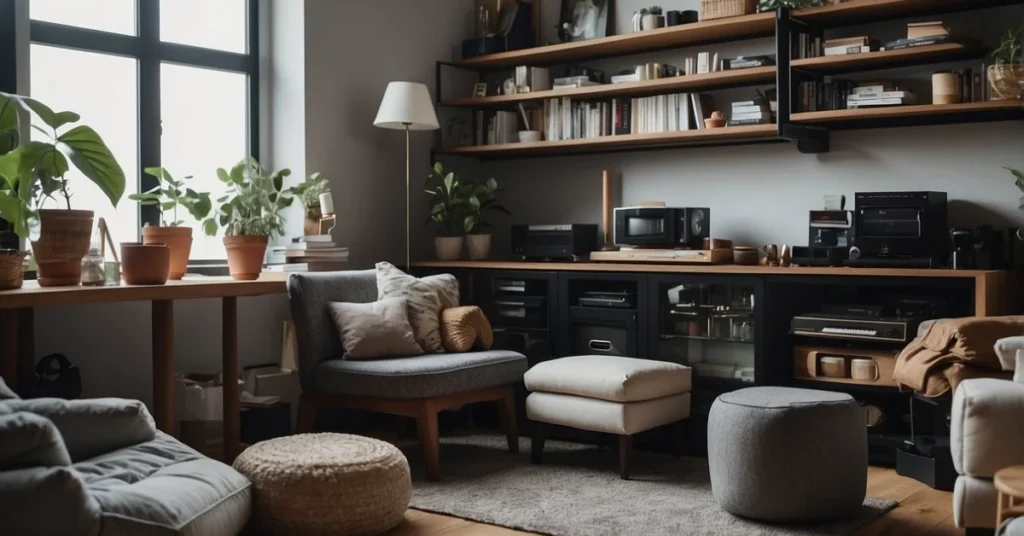
In our journey to define and understand language fully, we often find clarity in exploring the opposites of what we know.
Understanding Through Opposites
When we consider the opposite of a minimalist approach in semantics, we delve into a world that is full, complex, and intricate. This perspective doesn’t settle for the bare essentials of meaning but rather invites a detailed and over-the-topinterpretation. Our thesaurus becomes our best friend as we embark on an advanced search for opposites, or antonyms, that challenge the minimalist’s restrained use of language.
Opposites in meaning help us to highlight the contrast in ideas, providing a backdrop that makes the deficits and excesses brighter. A term that one might consider cluttered or too decorated within a minimalist framework could be seen as rich with potential and nuance in a opposite of a minimalist stance. Thus, a non-minimalist might embrace a semantic connection that is packed to the brim with connotations and historical baggage—elements seen as extraneous by their minimalist counterparts.
A thesaurus provides a vast array of such semantic connections, offering a multitude of ways to express a single concept. Each synonym brings with it its own detailed shade of meaning, and each antonym offers a counterpoint that helps us to understand the full spectrum. For those seeking opposites to create a bold statement or to infuse their language with color, the opposite of a minimalist perspective gives them free rein to explore complex layers within communication.
Hence, whether it’s the intricate design of a grandiose sentence or the intentional use of a cluttered lexicon, the Semantic Connections we forge beyond minimalism open us up to a world where language is as full and vibrant as our ideas demand it be.
Frequently Asked Questions
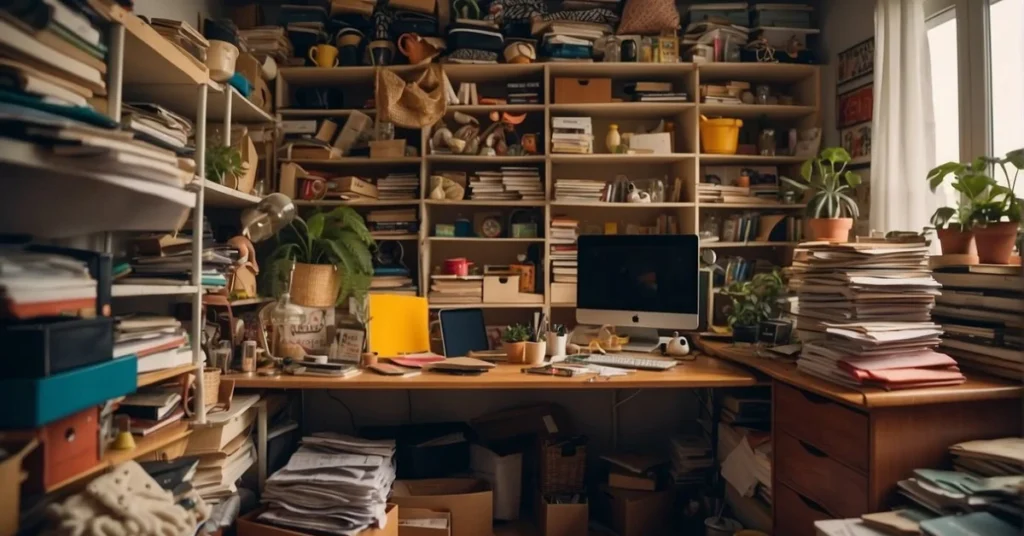
When exploring the realm of personal style and home decor, we frequently encounter the lively and abundant concept of a maximalist lifestyle. It stands in vivid contrast to our often-celebrated minimalist approach, flourishing with color, patterns, and a richness of possessions that tell a story.
What does the opposite of a minimalist lifestyle entail?
The opposite of a minimalist lifestyle embraces the idea of more is more, highlighting an appreciation for abundance in both material possessions and sensory experiences. It revolves around the concept of excess and eclecticism, celebrating a cornucopia of textures, colors, and patterns.
How does maximalist fashion differ from minimalist fashion?
Maximalist fashion stands out with its bold use of color, mixed prints, and layering of various textures and accessories. While minimalist fashion is defined by simplicity and a limited color palette, maximalist fashion is dynamic, expressive, and unafraid of making a statement.
What characterizes a maximalist person?
Individual, who are the opposite of a minimalist, are often characterized by their love for extravagance and detail. They find joy in surrounding themselves with a variety of objects and decorations that reflect their personality and tastes, creating a rich tapestry of visual interest in their personal spaces.
How can a house be decorated in a maximalist style?
To decorate a house in a maximalist style, one should focus on layering multiple design elements. This can include an eclectic mix of furniture, varied wall art, bold color schemes, and an array of ornamental objects that fill the space with vibrancy and life.
What are the psychological differences between minimalism and maximalism?
Psychologically, minimalism tends to promote a sense of calm and order by reducing clutter and distractions. The opposite of a minimalist, on the other hand, can provide a sense of comfort and self-expression through the abundance of cherished items and the stimulation of the senses.
What design principles does the opposite of a minimalist embrace?
The design principles the opposite of a minimalist, eg maximalism, include an emphasis on personal expression, an embrace of excess, and the integration of a diverse range of styles and eras. It’s an aesthetic that cultivates a sense of fullness and personality, often reflected in complex compositions and richly decorated spaces.
We’ve explored the world of maximalism, embracing abundance and richness. Now, we want to hear from you! Do you thrive in spaces filled with color and texture, the opposite of a minimalist approach? Share your unique style tips in the comments below and join the conversation!
